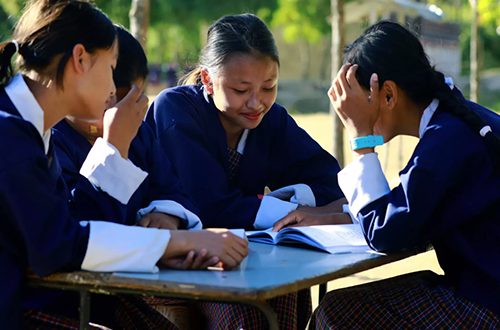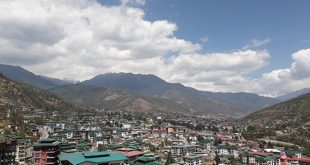Bhutan is preparing to transform its education system to meet growing domestic demand and attract students from abroad, according to the Industrial Development Roadmap 2025 from the Ministry of Industry, Commerce and Employment (MoICE).
The roadmap sets ambitious goals to expand college capacity, encourage private and international institutions, and develop specialized programs in science, technology, creative arts, sports, and vocational education.
It emphasizes education as a key pillar of economic growth, innovation, and social development.
According to MoICE, currently, less than half of Bhutan’s Class 12 graduates can secure admission into domestic colleges and universities.
An investigation by The Bhutanese found that only about 20% of students under government scholarships and 15% of self-financed students are absorbed into Royal University of Bhutan (RUB) colleges, making the total domestic absorption just 35%.
Many students are therefore forced to study abroad or pursue alternative pathways such as technical, vocational, or skill-based programs.
The Industrial Development Roadmap 2025 seeks to address this challenge by ensuring that at least 90% of high school graduates are absorbed into domestic higher education institutions. While the National Education Policy 2025 encourages 40% of grade XII students to pursue higher education, the remaining 60% will explore technical and vocational pathways. This gap presents a major opportunity for private institutions to grow and provide programs that meet student aspirations and labor market needs.
According to the roadmap, Bhutan’s education system has several strengths. It follows a complete approach guided by Gross National Happiness (GNH), ensuring students develop academically, socially, and ethically. Government support has improved access and literacy rates, and schools benefit from a safe, English-medium learning environment.
At the same time, challenges remain, including limited tertiary capacity, skills mismatches with labor market demands, low foreign investment, and a small number of private colleges beyond early childhood education. Growth opportunities include public-private partnerships, online learning, niche institutions, and international collaborations.
To reach these targets, the roadmap recommends strategic interventions, including creating a Single Window Clearance Platform to simplify approvals for private and foreign institutions, introducing sector-specific accreditation models, drafting a National Education Conservation Policy to preserve Bhutanese culture, and developing a National HRD Masterplan to align education with workforce needs.
Public-private partnerships, co-designed courses, and international collaborations are also encouraged to build globally competitive institutions.
The roadmap also envisions private institutions hosting annual education fairs, while the Education Export Strategy aims to attract students from India, Nepal, Bangladesh, and Southeast Asia, leveraging Bhutan’s GNH brand.
By 2031, it anticipates annual education expos, a national education portal listing all accredited institutions with virtual tours, and education tourism packages that combine short courses with cultural experiences.
From these strategies and aims, the results according to the roadmap state, “At least 90% of high school graduates will be absorbed into domestic higher education institutions, reducing reliance on overseas education.” It also states, “The private and international institutions will account for at least 20% of tertiary and technical education enrolments, supported by a strong quality assurance system, and the overall contribution to GDP will rise to 8% by 2035, driven by private sector participation, FDI, and the growth of education tourism.”
According to the roadmap, investing in education is not just about schools and colleges, but also about preparing a workforce that can support Bhutan’s economic diversification, entrepreneurship, and innovation.
By expanding domestic capacity, encouraging private and international institutions, and developing specialized programs, the ministry aims to retain students, attract learners from abroad, and build a workforce ready to drive economic growth, innovation, and cultural preservation.
According to the ministry, if implemented successfully, these measures could position the country as a regional hub for holistic, value-based education while supporting long-term social and economic development.
 The Bhutanese Leading the way.
The Bhutanese Leading the way.




